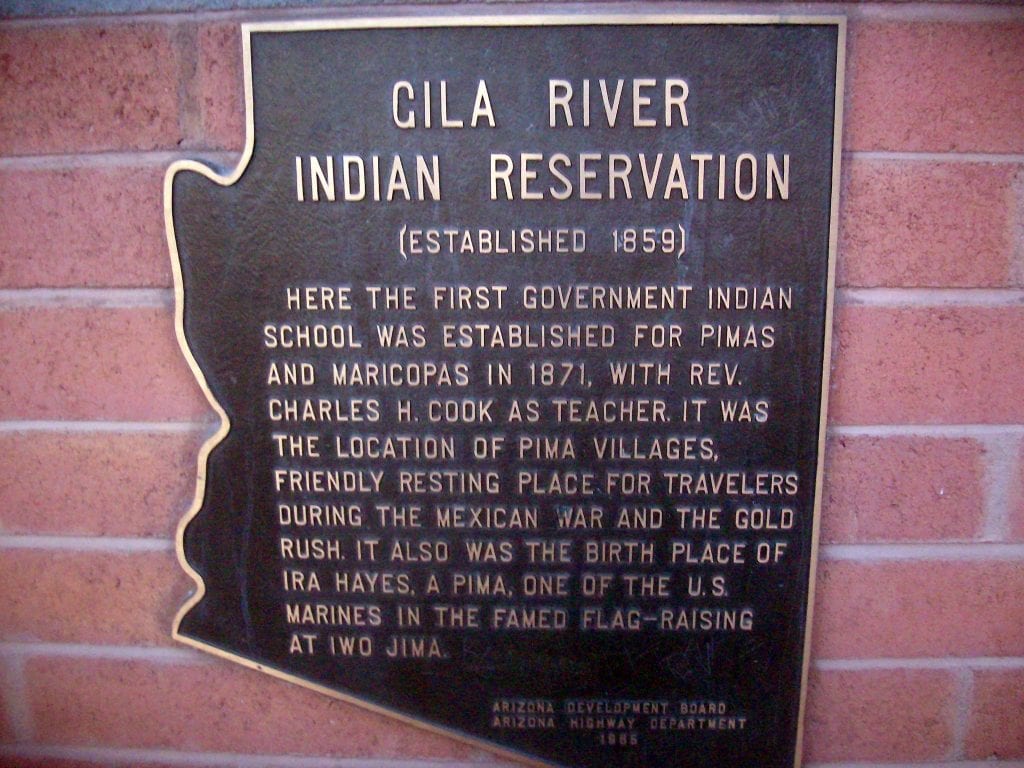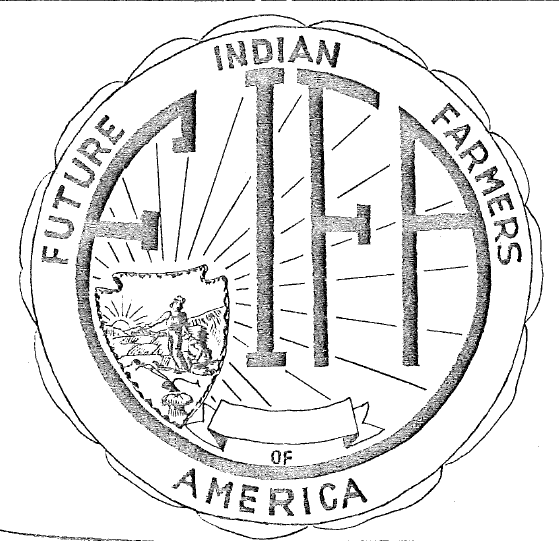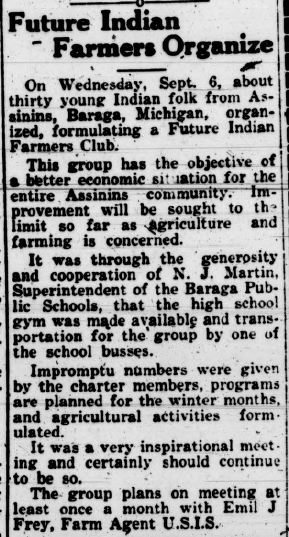| If you own an Amazon Echo you might be familiar with the “Question of the Day” skill (app). Here is how the dialogue might go about this week’s Friday Footnote.
Me: Alexa, what it the question of the day? A. An outreach effort by the National FFA in the 1950s to establish FFA chapters in India. The correct answer is D. Soon after the FFA was established there was a desire to establish FFA chapters in schools located on Indian reservations. Agriculture was taught in Indian reservations schools but there was no student organization. (Note: since the resources for this Footnote all use the word Indian, that is the term that will be used in this document) But there was a problem. According to the FFA constitution, FFA chapters could only be established in schools under public control that had agriculture programs funded under the provisions of the Smith-Hughes Act. Schools on Indian reservations were not under public control and did not receive funding from the Smith-Hughes Act; they were funded and operated by the Bureau of Indian Affairs in the Department of the Interior. Thus, FFA chapters could not legally be established in these schools. However, at a meeting in 1936 with Indian school officials, the FFA Executive Secretary, W. A. Ross, suggested: “…that there could be an organization similar to F.F.A. worked out for the Federal Indian Schools and which might be patterned largely after the F.F.A.” The Pima Indians on the Gila River Reservation in Arizona had discussed starting a club like the FFA prior to Mr. Ross’s suggestion. So, they decided to take Mr. Ross up on his suggestion. The first Future Indiana Farmers of America (FIFA) chapter was established on the Gila River Reservation at the Pima Central Day School in Sacaton, Arizona on April 6. 1937. Mr. James Wells, Farm Agent of the U. S. Indian Service was a central figure in this effort (Mr. Wells was a former teacher of vocational agriculture in Colorado).
A week later the second FIFA chapter comprised of 48 students was established at the Phoenix Indian School (the only non-reservation Bureau of Indian Affairs school in Arizona). On April 20, 1937, delegates from both schools met at Sacaton to draw up a constitution for the new student organization. On May 4, 1937 delegates from both schools met at Phoenix and adopted the constitution for the Future Indian Farmers of America (see FIFA References Document, p. 1). Some of the provisions found in the Constitution were (See FIFA References Document, p. 2-4): Article III – Organization – Chapters are to be in Indian Schools which are under the jurisdiction of the U. S. Indian Service Article IV – Membership – There are four types of membership – Active (grades 9 and up), Junior (7th & 8th grade), Associate (former members up to 3 years after graduation), and Honorary. Dues were 15 cents and “Active members must carry…at least one supervised project” Article V – Insignia – The insignia shall consist of a circular emblem constructed with the letters F. I. F. A. signifying Future Indian Farmers of America. Within this formation is a small replica of an arrow-head. There are four symbols inside the arrow-head; the rising sun, indicating a new day in Agriculture for the Indians; an Indian women pointing toward the sun, illustrating faith and hope for the future; an Indian man in native dress, arising to the challenge of a new day; a plow representing a fundamental operation in Agriculture; and a sheaf of grain, representing an abundant harvest. John Collier, U. S. Commissioner of Indian Affairs, was very supportive of the FIFA and was made an honorary member of the Sacaton Chapter of the FIFA. The Los Angeles Times, in a rather detailed article about the FIFA published on June 5, 1937 (see FIFA References Document, p. 6) stated, “Now that Commissioner Collier has given his approval, it is predicted that the F.I.F.A. will become a fixture in every Indian School where agriculture is taught.” Did the FIFA really become a fixture in every Indian School? It is difficult to determine if the FIFA became a fixture in every Indian School. The FIFA was a grassroots effort and did not have the state and national leadership like the FFA. The potential for a truly national organization was somewhat limited because of the geographic location and specialized status of the Indian Schools. The existence of FIFA chapters has not been well documented. I have searched for documents about the FIFA and found very little information. The Hancock Democrat newspaper in Greenfield, Indiana ran a story announcing the formation of the FIFA on September 23, 1937. Part of the article reads “Future Indian Farmers of America is the name of an organization expected to spread to every Indian reservation in the United States and mean as much to Indian boys of high school age as the Future Farmers of America mean to white boys.” The September21, 1939 edition of the L’Anse Sentinel (Michigan) announced “On Wednesday, Sept. 6, about thirty young Indian folk from Assinins, Baraga, Michigan, organized, formulating a Future Indian Farmers Club…. It was a very inspirational meeting and certainly should continue to be so. The group plans on meeting at least once a month with Emil J Frey, Farm Agent U.S.I.S”. [Note: L’Anse is located within the L’Anse Indian Reservation which encompasses the Lake Superior Band of Ojibwa]
Perhaps one reason one cannot find a plethora of information about the Future Indian Farmers of America might be attributed to the FFA. Huh? The Rest of the Story The previously mentioned Los Angeles Times article caught the attention of the Agricultural Education leadership. One week after the article was published, the state supervisor of Agricultural Education in Colorado forwarded a copy of the article to W. A. Ross in Washington asking if he was aware of the Future Indian Farmers (See FIFA References Document, p. 5). Yes, Mr. Ross was aware of this activity. He and Mr. A. J. Linke (Chief of the Federal Agricultural Education Service) met with Indian School leaders at the 1936 American Vocational Association convention to discuss establishing FFA chapters on Indian reservation. Ross and Linke explained the constitutional restrictions and suggested an alternative student organization for agricultural students be established in reservation schools. Additionally, Mr. Ross had visited the Pima Central Day School on June 2, 1937 and talked with the school officials about the organization. While verbally stating support for this effort Mr. Ross was concerned about the name of the organization. Shortly after receiving the letter from Colorado, Ross wrote to state FFA advisors (June 21, 1937, See FIFA References Document, P. 8-9), “…we want to cooperate with this group and that they are welcome to use F.F.A. ideas and experiences in getting their own organization going but that their present name is questionable.” Ross further wrote, “Don’t you think in order to avoid confusion and in case this Indian organization spreads to other states, we should ask them to drop the name ‘Future’ and make it the ‘Young Indian Farmers of America’…” A motion proposed and carried at the 1937 FFA convention stated“…that the Board of Trustees be given full authority to negotiate with an organization known as Future Indian Farmers of America in regard to trying to get the name of their organization changed so that there may be no confusion between the two organizations.” (1937 FFA Convention Proceedings, p. 21). The emergence of the FIFA and the possible name confusion caused the federal agricultural education leadership to consider allowing Indian schools to receive vocational funding and to establish FFA chapters in these schools. In a March 10, 1939 meeting with the Director of Indian Education in the Bureau of Indian Affairs, it was decided to seek input about this idea at the upcoming regional Agricultural Education meetings At the North Central meeting later in March of 1939, those in attendance were firmly opposed to the idea. The question posed was “What is the feeling of you men in the different States of this Region regarding having vocational agriculture and the F.F.A. in Indian schools?” (See FIFA References Document, p. 16-17) Some of the responses were: Wisconsin – “The boys in these schools are not preparing for farming.” Kansas – same reaction. Nebraska – If vocational agriculture in these schools were reimbursed it would create an administrative problem that our State Director would prefer to avoid. We had vocational agriculture in one Indian school and it was a failure.” Wisconsin again – “Some Indian boys in white schools are members of the F.F.A.; their supervised practice is inferior.” However, the group did vote to have a study conducted about this issue. At the North Atlantic regional meeting, “Mr. Ross discussed the problem of Indian Membership in the National Organization of Future Farmers of America.” The group voted to have the Department of Education conduct a study of the issue. The Southern region did not address the question at their meeting and there were only informal discussions at the Pacific regional conference. After studying the possibility of having Indian schools receive federal vocational funds and being able to establish FFA chapters, the decision was not to do so. The state-level agricultural education leadership was opposed to the idea, funding would create problems at the state level, and changes would be required in the FFA constitution. It was just too much trouble. During the time the FFA was wrestling with the “Indian” issue, the Indian community was also hard at work on the issue. In 1938 and 1939 discussions among Indian Service workers, agency superintendents and Indian School officials determined there was a need for an Indian Youth Organization that focused on more than just agriculture. Accordingly, four regional meetings of Indian youth were held in 1940 and 1941 to discuss the idea of having a national organization of Indian youth. The meetings were in Oklahoma, Oregon, Arizona, and South Dakota. The students voted unanimously to support the creation of a new national organization for Indian youth. The FFA/FIFA issue was apparently resolved when a meeting was held at the Chilocco Indian Agriculture School in Oklahoma the week of May 5, 1941. Student delegates from 38 different Indian Schools, representing 35 different tribes, and twelve states met and created a national organization known as the American Indian Youth Organization (AIYO). The AIYO focused primarily on agriculture and home economics. The reason for this was because “In the family life of the Indian many tasks are interchangeable. It is therefore essential that home economics and agriculture teachers bring their educational problems closely together in the vocational training of Indian youths” (Goodwin, 1942, p. 494). The American Indian Youth Organization did what Goodwin suggested and will be featured in a future Friday Footnote. But The establishment of the AIYO did not necessarily mean the Future Indian Farmers of America ceased to exist. An article about an upcoming livestock show in the Alamogordo (NM) Daily News reported that “Several entrants are expected from the Future Indian Farmers of the Santa Fe Indian School” (March 26, 1957). In the March 31, 1957 issue of the Santa Fe New Mexican there is mention of a school function that reads “The event, sponsored by the Future Homemakers of America and the Future Indian Farmers of America, attracted…” So perhaps the Future Indian Farmers of America still lives on somewhere. We can say with some certainty that FIFA chapters existed in Michigan, New Mexico, and Arizona. Who knows where else they may have existed? As a profession, we need to capture this mostly unknown and undocumented aspect of American agricultural education history. References: FFA Convention Proceedings, 1937 Goodwin, William I. (1942). Vocational Education in Agriculture at Indian Schools. In Stimson, R. W & Lathrop, F. W. (Eds), History of Agricultural Education of Less Than College Grade in the United States, Washington: U. S. Government Printing Office. |
Focusing on the History of Agricultural Education and Rural America



 The September 15, 1941 edition of Indian Education, a publication of the Bureau of Indian Affairs provides some background information about the FIFA but does not identify any chapters other than the original two.
The September 15, 1941 edition of Indian Education, a publication of the Bureau of Indian Affairs provides some background information about the FIFA but does not identify any chapters other than the original two.